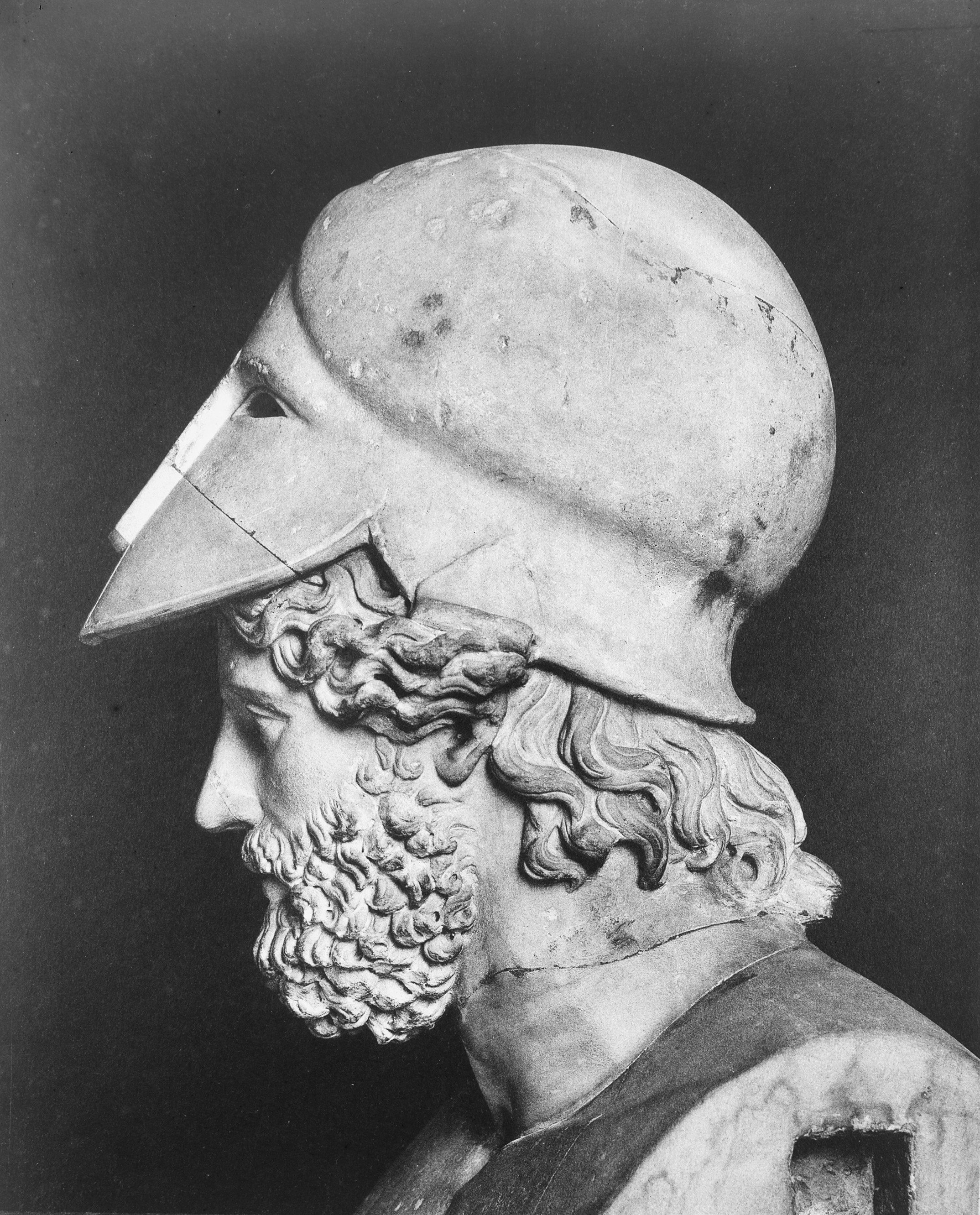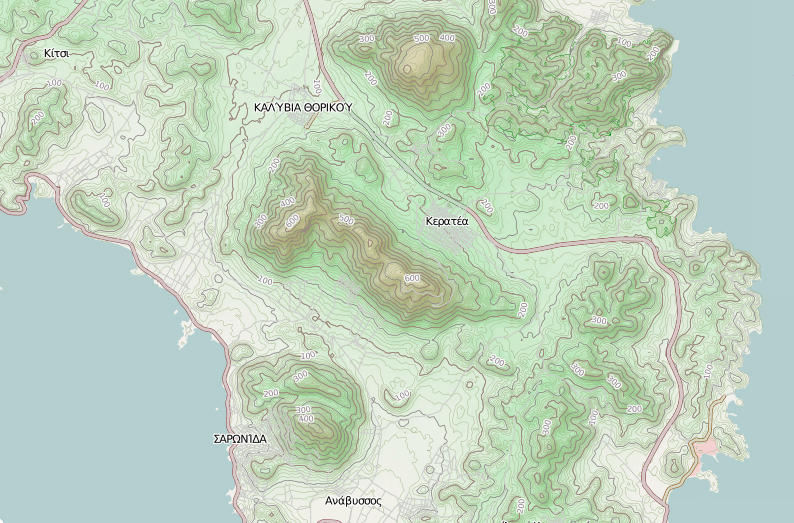|
Phrearrhii
Phrearrhii or Phrearrhioi or Phrearroi ( gr, Φρεάρριοι) was a deme of the coastal ('' paralia'') region of ancient Attica, belonging to the Leontis tribe (''phyle''), with nine to ten representatives in the '' Boule''. It was situated roughly 30 km (20 mi) south-east of Athens, bordering the deme of Anaphlystos to the south-west, just north of Attic Olympus, close to modern Pheriza (Φέριζα), in the Lavreotiki municipality. The Athenian statesman Themistocles Themistocles (; grc-gre, Θεμιστοκλῆς; c. 524–459 BC) was an Athenian politician and general. He was one of a new breed of non-aristocratic politicians who rose to prominence in the early years of the Athenian democracy. A ... was a native of Phrearrhioi. Its site is located east of modern Olymbos. References Populated places in ancient Attica Former populated places in Greece Demoi {{AncientAttica-geo-stub ... [...More Info...] [...Related Items...] OR: [Wikipedia] [Google] [Baidu] |
Themistocles
Themistocles (; grc-gre, Θεμιστοκλῆς; c. 524–459 BC) was an Athenian politician and general. He was one of a new breed of non-aristocratic politicians who rose to prominence in the early years of the Athenian democracy. As a politician, Themistocles was a populist, having the support of lower-class Athenians, and generally being at odds with the Athenian nobility. Elected archon in 493 BC, he convinced the polis to increase the naval power of Athens, a recurring theme in his political career. During the first Persian invasion of Greece he fought at the Battle of Marathon (490 BC) and was possibly one of the ten Athenian ''strategoi'' (generals) in that battle. In the years after Marathon, and in the run-up to the second Persian invasion of 480–479 BC, Themistocles became the most prominent politician in Athens. He continued to advocate for a strong Athenian Navy, and in 483 BC he persuaded the Athenians to build a fleet of 200 triremes; these prove ... [...More Info...] [...Related Items...] OR: [Wikipedia] [Google] [Baidu] |
Deme
In Ancient Greece, a deme or ( grc, δῆμος, plural: demoi, δημοι) was a suburb or a subdivision of Athens and other city-states. Demes as simple subdivisions of land in the countryside seem to have existed in the 6th century BC and earlier, but did not acquire particular significance until the reforms of Cleisthenes in 508 BC. In those reforms, enrollment in the citizen-lists of a deme became the requirement for citizenship; prior to that time, citizenship had been based on membership in a phratry, or family group. At this same time, demes were established in the main city of Athens itself, where they had not previously existed; in all, at the end of Cleisthenes' reforms, Athens was divided into 139 demes, to which one can be added Berenikidai (established in 224/223 BC), Apollonieis (201/200 BC), and Antinoeis (added in 126/127). The establishment of demes as the fundamental units of the state weakened the ''gene'', or aristocratic family groups, that had dominated t ... [...More Info...] [...Related Items...] OR: [Wikipedia] [Google] [Baidu] |
Paralia (trittys)
The Paralia ( el, Παραλία, 3=the sea-side/coast) was a geographical and administrative region (''trittys'') of ancient Attica. The term designated the coasts of Attica, but was also generally used for the entire portion of Attica east of Mount Hymettus. The term acquired a technical meaning with the reforms of Cleisthenes in , when each of the ten Attic tribes was made to territory from comprise three zones (''trittyes''), urban (''asty'', the city of Athens), interior (''mesogeia'') and coastal (''paralia''). In the Classical period, the ''paralia'' comprised about 40 settlements (''demoi In Ancient Greece, a deme or ( grc, δῆμος, plural: demoi, δημοι) was a suburb or a subdivision of Classical Athens, Athens and other city-states. Demes as simple subdivisions of land in the countryside seem to have existed in the 6th ...''). References Geography of ancient Attica {{AncientAttica-geo-stub ... [...More Info...] [...Related Items...] OR: [Wikipedia] [Google] [Baidu] |
Leontis
Leontis is a phyle which had twenty demes at the time of the creation of the phyle, which is at the time of the creation of a group of ten phylai. The phyle is shown on the base of a statue made after an anthippasia to commemorate the victory of the phyle at the mock battle. Themistocles Themistocles (; grc-gre, Θεμιστοκλῆς; c. 524–459 BC) was an Athenian politician and general. He was one of a new breed of non-aristocratic politicians who rose to prominence in the early years of the Athenian democracy. A ... belonged to this phyle. Two horse-men are listed as part of the Catalogus Hippeum in history who possibly belonged to this phyle, they were Euktimenos and Euthymenes, both living during the 3rd century B.C.E.H. W. Pleket ''Supplementum epigraphicum graecum''published by J.C. Gieben 1991, 699 pages, etrieved 2015-12-22/ref> Sources Tribes of ancient Attica {{AncientGreece-stub ... [...More Info...] [...Related Items...] OR: [Wikipedia] [Google] [Baidu] |
Phyle
''Phyle'' ( gr, φυλή, phulē, "tribe, clan"; pl. ''phylai'', φυλαί; derived from ancient Greek φύεσθαι "to descend, to originate") is an ancient Greek term for tribe or clan. Members of the same ''phyle'' were known as ''symphyletai'' ( gr, συμφυλέται), literally: ''fellow tribesmen''. They were usually ruled by a ''basileus''. Some of them can be classified by their geographic location: the Geleontes, the Argadeis, the Hopletes, and the Agikoreis, in Ionia; the Hylleans, the Pamphyles, the Dymanes, in the Dorian region. Attic tribes The best-attested new system was that created by Cleisthenes for Attica in or just after 508 BC. The landscape was regarded as comprising three zones: urban (''asty''), coastal ('' paralia'') and inland (''mesogeia''). Each zone was split into ten sections called ''trittyes'' ('thirdings'), to each of which were assigned between one and ten of the 139 existing settlements, villages or town-quarters, which were henceforth cal ... [...More Info...] [...Related Items...] OR: [Wikipedia] [Google] [Baidu] |
Boule (ancient Greece)
In cities of ancient Greece, the boule ( el, βουλή, ''boulē''; plural βουλαί, ''boulai'') was a council of over 500 citizens (βουλευταί, ''bouleutai'') appointed to run daily affairs of the city. Originally a council of nobles advising a king, ''boulai'' evolved according to the constitution of the city: In oligarchies boule positions might have been hereditary, while in democracies members were typically chosen by lot and served for one year. Little is known about the workings of many ''boulai'', except in the case of Athens, for which extensive material has survived. Athenian boule The original council of Athens was the Areopagus. It consisted of ex- archons and was aristocratic in character. Solonian boule The Athenian boule under Solon heard appeals from the most important decisions of the courts. Those in the poorest class could not serve on the boule of 400. The higher governmental posts, archons (magistrates), were reserved for citizens of the top two ... [...More Info...] [...Related Items...] OR: [Wikipedia] [Google] [Baidu] |
Ancient Athens
Athens is one of the oldest named cities in the world, having been continuously inhabited for perhaps 5,000 years. Situated in southern Europe, Athens became the leading city of Ancient Greece in the first millennium BC, and its cultural achievements during the 5th century BC laid the foundations of Western civilization. During the early Middle Ages, the city experienced a decline, then recovered under the later Byzantine Empire and was relatively prosperous during the period of the Crusades (12th and 13th centuries), benefiting from Italian trade. Following a period of sharp decline under the rule of the Ottoman Empire, Athens in the 19th century as the capital of the independent and self-governing Greek state. Name The name of Athens, connected to the name of its patron goddess Athena, originates from an earlier Pre-Greek language. The origin myth explaining how Athens acquired this name through the legendary contest between Poseidon and Athena was described by Herodotus,Hero ... [...More Info...] [...Related Items...] OR: [Wikipedia] [Google] [Baidu] |
Anaphlystos
Anaphlystus or Anaphlystos ( grc, Ἀνάφλυστος) was a coastal (paralia) deme of ancient Athens, belonging to the Antiochis#Athenian_clan_(phyle), Antiochis phyle, on the west coast of Attica, opposite the island of Eleussa, and a little north of the promontory of Sunium, between that promontory and that of Astypalaea (promontory), Astypalaea. It bordered on Aegilia (Attica), Aegilia to the west, to Atene (deme), Atene in the south-east and to Amphitrope to the east. To the northwest, it was separated from Phrearrhioi by the ''Astike Hodos''. It was a place of some importance. It had ten representatives in the Boule (ancient Greece), Boule. Xenophon recommended the erection of a fortress here for the protection of the mines of Sunium. Strabo speaks of a paneium (Πανεῖον), or Grotto of Pan (god), Pan, in the neighbourhood of Anaphlystus. It was situated at a site called Agios Georgios (St. George), close to the modern settlement of Anavyssos, on the Athens Riviera. ... [...More Info...] [...Related Items...] OR: [Wikipedia] [Google] [Baidu] |
Attic Olympus
Laureotic Olympus (named for the region of Laurium, also Όλυμπος Αττικής "Attic Olympus", Σκόρδι) is a hill in Attica, just north of Anavyssos, in Saronikos municipality, East Attica, Greece. At a height of 487 m is one of the three major elevations of southern Attica, alongside mounts Panio and Merenda (Myrrhinous). Attic Olympus is the place of origin of the white marble used in the Temple of Poseidon at Sounion The Temple of Poseidon is an ancient Greek temple on Cape Sounion, Greece, dedicated to the god Poseidon. There is evidence of the establishment of sanctuaries on the cape from as early as the 11th century BC Sounion’s most prominent temples .... It is also notable as the site of an early Christian basilica, known as the Basilica of Laureotic Olympos, established before AD 559, a three-aisled church with double narthex and baptistery, decorated with sculpted marble and a mosaic floor. References * N. Gkioles – G. Pallis (eds.), ''At ... [...More Info...] [...Related Items...] OR: [Wikipedia] [Google] [Baidu] |
Lavreotiki
Lavreotiki is a municipality at the southeasternnmost tip of the Attica peninsula in the Greek regional unit of East Attica. Its municipal seat is the town of Laurium (''Lavrio''). It is historically important as a significant ancient mining district, most notably in the villages of Laurium and Thorikos on the southeastern seaboard during the 6th, 5th, and 4th centuries BCE. As such it financed the wealth of Athens and the emergence of the Athenian Empire through the slave-powered mining efforts for silver and lead, beginning with the discovery of 2 deep-vein mining efforts during the 480's. Prior to that development, which at Themistocles urging in 483 BC led to the expansion of the Athenian fleet to 200 ships, only surface-mining was deployed as a technique for harvesting silver. More than 250 ore washeries have been identified by archaeologists and geologists in the district. Municipality The municipality Lavreotiki was formed at the 2011 local government reform by the merge ... [...More Info...] [...Related Items...] OR: [Wikipedia] [Google] [Baidu] |



